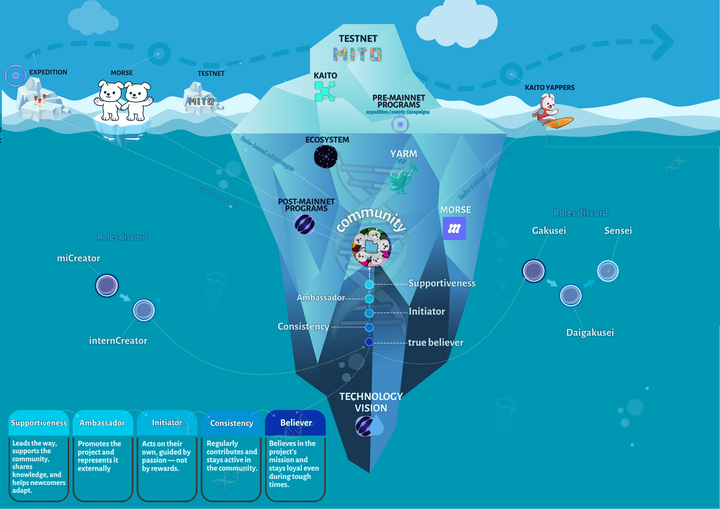miAssets & maAssets: Making Liquidity Work

How Mitosis Reinvents Liquidity with miAssets and maAssets
Imagine this: you've locked tokens in a liquidity pool, received LP tokens, but now your funds are just sitting there as dead weight. You can't use them as collateral, can't sell without losses, can't transfer to another network. Sound familiar?
Mitosis solves this problem through a system of derivative tokens — miAssets and maAssets — that make liquidity positions as flexible as regular tokens.
What Are miAssets and Why You Need Them
miAssets are tokenized representations of your deposits in Mitosis. When you deposit ETH into a Mitosis Vault, you receive miETH in a 1:1 ratio. But this isn't just a wrapper — it's a full-fledged asset with additional capabilities.
Key advantages of miAssets:
- Retain yield: miETH value grows with accumulated profits from strategies
- Stay liquid: you can trade them, use as collateral, or transfer between networks
- Grant governance rights: vote on liquidity allocation in the ecosystem
For example, holding miETH, you can vote to deploy liquidity to Aave on Avalanche and earn yield without moving assets from Ethereum.
maAssets: Long-term Strategy with Fixed Terms
maAssets work differently. These are tokens you receive by locking Vanilla Assets (basic deposit representations) in Matrix campaigns for a specific period.
Key features of maAssets:
- Fixed terms: yield and lock period known in advance
- Exclusive profits: access to special strategies from partner protocols
- Remain tradeable: despite being locked, you can manage the position within Mitosis ecosystem
This solves the main problem of traditional staking: your funds are locked, but the position remains flexible.
How This Solves Traditional DeFi Problems
Capital Inefficiency Problem
In regular DeFi, you choose: either yield or liquidity. Lock in a pool — get profits but lose flexibility. Mitosis removes this dilemma. miAssets and maAssets allow earning yield while simultaneously using the position in other protocols.
Cross-chain Fragmentation Problem
Traditional LP tokens are tied to one network. To use liquidity on another network, you need to bridge with all the risks and fees. miAssets work cross-chain natively thanks to Hyperlane integration.
Composability Problem
Regular LP tokens integrate poorly with other protocols. miAssets and maAssets are designed as composable primitives — they can be used in lending, trading, as collateral in derivatives.
Practical Use Cases
For Regular Users:
- Deposit USDC in Mitosis, receive miUSDC
- Use miUSDC as collateral in lending protocol
- Simultaneously earn yield from Mitosis strategies and borrow against collateral
For DAOs and Protocols:
- Hold maAssets as a yield strategy for treasury
- Use miAssets to create incentive systems
- Integrate as standardized liquidity primitives
For Developers:
- Build applications on top of tokenized liquidity
- Create new financial products using miAssets as building blocks
- Develop cross-chain strategies without complex infrastructure
Technical Implementation Without Complexity
Mitosis automates all complex logic: real-time position tracking, withdrawal routing, fair value calculation at redemption. Users see a simple interface while the protocol handles technical tasks under the hood.
The system uses cross-chain smart contracts and transparent pricing mechanisms. This means you can redeem maAssets for underlying value without slippage and manual bridge operations.
Conclusion
miAssets and maAssets aren't just wrappers over LP tokens. This is new infrastructure that makes liquidity mobile, modular, and programmable. Instead of choosing between yield and flexibility, you get both.
The technology solves real problems: capital inefficiency, liquidity fragmentation between networks, and the complexity of composing DeFi protocols. It's a practical tool for those who want to use their assets most efficiently in multi-chain DeFi.
🔗 Stay Connected with Mitosis:
- Explore the project: mitosis.org
- Follow for updates: X (formerly Twitter)
- Join the community: Discord Server
- Get announcements first: Telegram Channel



Comments ()